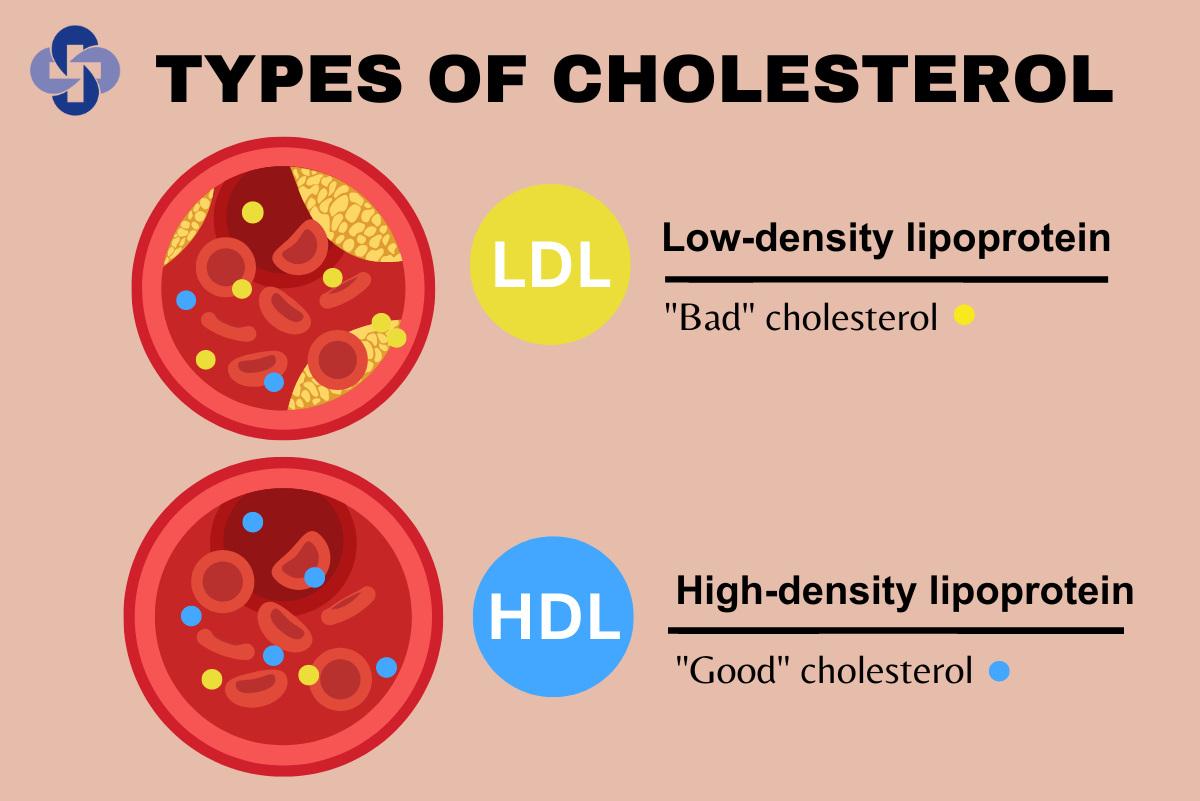Cholesterol: The Good and the Bad
March 30, 2023It is important to know the differences between LDL and HDL, which are two lipoproteins that carry cholesterol from cell to cell.
Cholesterol is a waxy particle in your blood. It is essential for good health. But, too much cholesterol can increase the likelihood of heart disease and stroke. There are two types of lipoproteins that carry cholesterol from cell to cell in the body. One is called LDL, also known as low-density lipoprotein, while the other is called HDL, also known as high-density lipoprotein. A test can measure the amount of LDL and HDL in your bloodstream.
LDL (Bad) Cholesterol
LDL is known as “bad” cholesterol because of the adverse health complications it can contribute to. LDL can add to fatty buildups in the arteries and cause atherosclerosis. This causes a narrowing in the arteries and increases the likelihood of heart attack, stroke, and peripheral artery disease.
Foods that should be limited or eliminated from your diet because they contribute to a high LDL count include:
- Red meat
- Fried foods
- Baked goods
HDL (Good) Cholesterol
HDL is known as “good” cholesterol because a healthy amount of this can protect against heart attack and stroke.
HDL can carry LDL away from the artery walls and instead to the liver, where the lipoprotein can break down and leave the body. It is important to note that HDL cannot completely eliminate LDLs from the body. Only one-third to one-fourth of blood cholesterol is carried by HDL.
Foods that can help boost your HDL count include:
- Oats
- Beans
- Legumes
- Olive Oil
- Whole grains
- Nuts and Seeds
Triglycerides Can Contribute to High Cholesterol
Triglycerides are the most common form of fat in the body. They can store excess energy from your diet.
A high triglyceride level combined with high amounts of LDL (bad) cholesterol or low HDL (good) cholesterol can create fatty buildups within the arteries and increase the risk of heart attack and stroke.
Check Your Cholesterol Levels
It is important to check your cholesterol levels to make sure they are at a healthy level. Healthy lifestyle habits such as eating a balanced diet, being consistently active, and stopping tobacco use can better help you manage your cholesterol levels. It is important to speak with your health care provider about testing and the best treatment plan for you, if needed.
Don’t have a primary care provider? A PCP is your partner for wellness, routine sick care, and referrals to medical specialists. If you don’t have a PCP, St. Mary’s can help.

